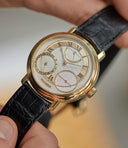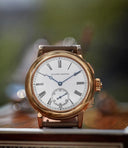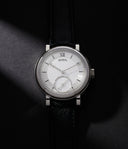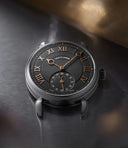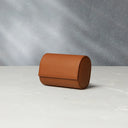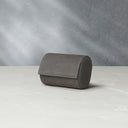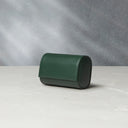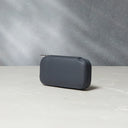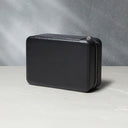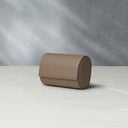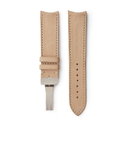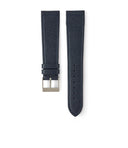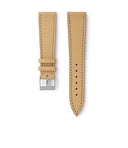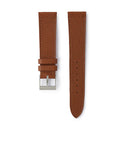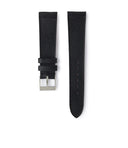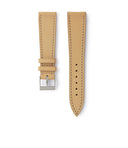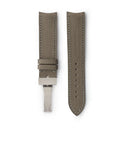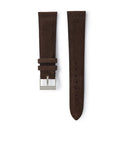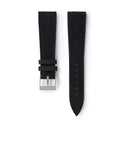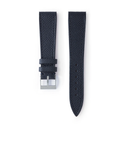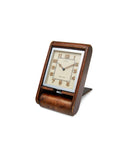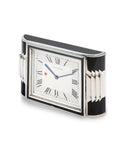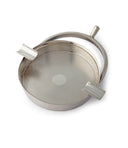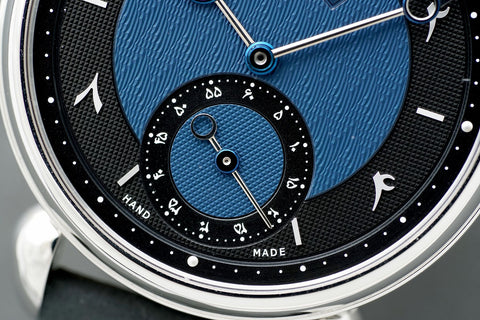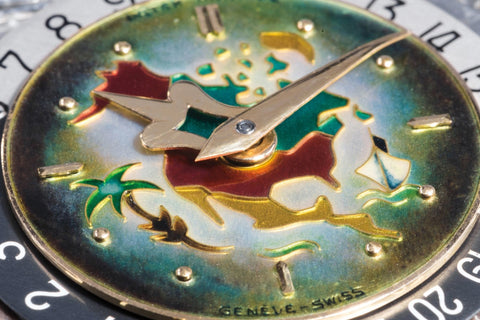

Technical: Deadbeat seconds
Raj Aditya Chaudhuri
It is ironic that the advent of cheap and accurate quartz regulated watches was instrumental in the demise of deadbeat or jumping seconds. This is since the latter – which had been the preserve of technical mechanical chronometry – was visually indistinguishable from the clean, precise ticks of quartz watches. Ever since, the clean, higher frequency motion of the seconds hand has come to be synonymous with mechanical watchmaking.
Briefly considering the history that has led to the measurement of time in seconds, we look at the two main ways in which watchmakers have traditionally sought to precisely display this base unit in wristwatches. We also closely examine a modern reference that achieves the deadbeat seconds in a slightly different way.
The rationale
The sexagesimal basis for timekeeping traces its history back to the ancient Egyptians neatly dividing the sun’s movement into 360 divisions – the number of days they estimated the earth would take on its elliptical rotation of the sun. From this issued the mathematical basis for time, including the 24 hours in a day and the 60 minutes in each of those hours. Championed by the Egyptians and the Babylonians, it was later adopted by the Greeks.
A desire to formalise a standardised base unit of time would be codified in the second half of the 19th century and then formalised in the Système International d'Unités in the 1960s. The second was recognised as the basis of timekeeping, with each day divided into 86,400 of them. Consequently, any watch aimed at chronometry needs to precisely indicate every single one of them.
The history
This had been the standard in long clocks with a pendulum weight suspended on a rod that was a metre long (0.994m to be exact). This precise length of the rod – and the force of gravity acting on it and the weight – allowed it to complete a full oscillation (engaging twice with the escapement) in 2 seconds, giving it a rate of 0.5Hz. This languid rate meant the gear train advanced in precise, one-second increments.
However, the need for more portable timekeepers demanded miniaturisation. This resulted in the development of the balance wheel that draws power stored in a mainspring. Owing to its dimensions, the balance wheel in a wristwatch has a relatively high rate – typically 4Hz – giving the seconds indicator a much smoother, gliding action. Among the many reasons that such an arrangement is suited to wristwear is that the fast rate of the balance makes the set up relatively impervious to shocks.


While theoretically, one way to achieve the slow rate to advance the gear train once a second would be a balance with a larger diameter, such a solution would come up against both practical and performance constraints. The balance would likely need to be larger in diameter than the calibre itself, and the slow rate would make it susceptible to the everyday shocks associated with wristwear.
The solution
Starting in the 1950s – an era marked by scientific leaps – there was a renewed need for chronometry and to synchronise clocks and watches with a reference time. The usefulness of a deadbeat seconds display became obvious. This scientific era was met with watches such as the Rolex Tru-Beat reference 6556, the Omega Synchrobeat calibre 372 and the Doxa 15000 (with the popular Chezard 115/116 calibre) aimed at professionals such as doctors, scientists and engineers.
For wristwatches, two ways to achieve such a seconds display emerged – a bolted-on star-and-flirt mechanism and a one-second remontoire between the mainspring and the escapement.


One of Petermann Bédat’s favourite references, the A. Lange & Söhne Richard Lange Jumping Seconds Richard Lange. It achieves it deadbeat seconds by way of both the star-and-flirt and one-second remontoire route. You can see it in action here.
In the first, and more popular approach, the escape wheel has a star-shaped base that engages with a spring-loaded staff, referred to as a flirt. The star-base of the escapement is responsible for the jumping seconds. Every eight beats of the escapement – or a second – the star advances once, in the process spinning the spring-loaded flirt – under tension from the constant motion of the gear train – one full rotation, bringing it back into contact with the next tooth of the star. This set of motions advances the seconds hand once a second.


The second way, as we mentioned previously, is the one-second remontoire. However, in this set up the deadbeat seconds is a happy coincidence in another pursuit – negating the variations in torque in the mainspring as it unspools. Such an intermediate spring – usually linked to the third or fourth wheels of the going train – is wound up to store just enough energy to power the next eight vibrations of the escapement. Every second, a release system kicks in, allowing the gear train to advance, before locking again and storing energy in the intermediate spring. Such a remontoire ensures that the same, average force is applied to the escapement no matter the stage of unwind the mainspring is in.
The Reference 1967
Then there is architecture employed in the calibre 171 at the heart of the Petermann Bédat Reference 1967. While popularly referred to as a secondary escapement, and employed by brands including De Bethune and Arnold & Son, it is not how watchmakers Gaël Petermann and Florian Bédat prefer to characterise the architecture.


To make his point, Petermann leans on the definition of escapement in The Illustrated Professional Dictionary of Horology compiled by G.-A. Berner in 1961: "An escapement is a mechanism fitted between the train and the regulating organ of most timepieces. The purpose of the escapement is to maintain the oscillation of the regulating organ". Petermann says, “It's just a matter of definition of the word. We prefer not to say escapement, because for us, an escapement regulates the watch, something our set up does not do.”
When Petermann and Bédat began the process of designing their own watch, they were initially drawn to the idea of a chronograph. In the end, they deferred that ambition for later, choosing instead to do a time-only reference first. Says Petermann, “The idea was that we could make a centre deadbeat second so we could use the same base and train gears for a chronograph later. This did not end up happening because when we started working on the chronograph [Reference 2941 Split Seconds], we worked with an engineer and started from zero.”
The scientific and discrete nature of the display appealed to both watchmakers who, right from the onset had informed collectors and connoisseurs in mind. They even named the watch after the year the first two prototypes of quartz wristwatch calibres were created, a reference to the fact that those who didn’t know would think the 1967 was powered by a quartz regulator.
Petermann says, “We searched for different deadbeat mechanisms. Since we initially had a closed dial, we really wanted to highlight and decorate the deadbeat mechanism. Normally, it’s set deep within the movement. I remember I saw one such unique mechanism by Robert Gafner in Horlogerie Ancienne (edition 22, 1987) – it was designed by this watchmaking teacher in the 1950s and ‘60s. The idea came from here, and such a design, with an anchor, suited us because we could embellish it by adding some arrows, decorate it and make beautiful wheels to really show what we could do.”


The pair started in 2016 with the basic design of the Valjoux 72 as the basis for their gear train and extensively redesigned it from there. Petermann adds, “In early 2017, our workshop was next to Dominique Renaud’s. He asked us to help him finish two movements and assemble one. We agreed and in lieu of payment, we asked if we could trade hours with Renaud’s engineer. We were young and didn’t care about money. To us having a CAD drawing of the movement on our computer was worth more than a few thousand in our pocket.”
This engineer helped Petermann Bédat totally redesign the calibre, staying within the only two constraints the duo placed on the design. “While we were open to all possibilities, we liked the idea of keep the movement size to 30mm. We restored a lot of Patek Philippes and a lot of the older chronograph movements – that were also based on Valjoux bases – were the same size. The other requirement was, we wanted to keep the placement of the second wheel. This was again inspired by vintage Patek, and visually it gives the movement attractive proportions.”
The result is that the calibre 171 is constructed on two levels. On the lower level are the wheels of the primary going train, while sitting atop the three-quarter bridge is a secondary gear train. This upper layer has two ratchet wheels – coupled with the gear train underneath – and the double-sided anchor.
The secondary gear train in action. Courtesy of Petermann Bédat.
Parting thoughts
Petermann readily admits the energy intensiveness of the calibre 171’s twin-level set up. While, as we noted before, such a secondary escapement is not unique to Petermann Bédat, the way it is employed and adorned in the 1967 is all the brand’s own.
It is an engaging mechanical illustration of a deeply technical, even nerdy, detail especially in the context of post-functional, craft-led watchmaking where chronometry is an artistic pursuit.
We would like to thank the team at Petermann Bédat for indulging our curiosity about their take on the deadbeat seconds display.




























































































